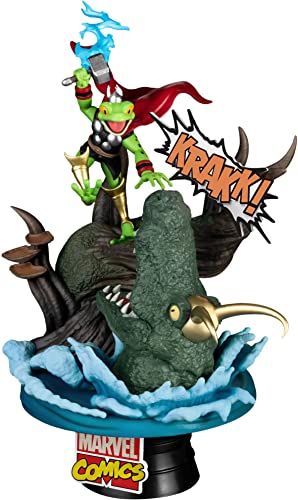To make concrete behavioral deductions without concrete evidence is not something I would be willing to jump the proverbial gun on. Ethologists and paleontologists alike will counsel that it would be unwise to say of an extinct organism we have never seen that it "definitely exhibited X behavioral trait." You can't make a definitive inference with the fossil record. Speculation is key, as is reliance upon extant organisms. If you're familiar with the novels, you'll know that the whole "they can't see you if you don't move" business is bunk, and was misconstrued when Grant encountered the T.rex... hence Howard King's death in the books, as well as the rexes searching the vehicle for Eddie in TLW; if one made the case that they attacked the vehicle when it was moving, that's understandable, but it doesn't attest to their clear familiarity with vehicles, glaring in through the open window to spot their prey, and then abandoning the car after devouring Eddie.
Coelurosaurs, T.rexes in particular, are distinguished for their binocular vision among large theropods, with the prevailing theory being that with their overlapping fields of vision afforded them the ability to deliver fairly precise bites when ambushing or assailing large and dangerous prey. T.rex visual acuity was simply astounding, being 13 times that of humans... and I believe eagles only have a visual acuity of nearly 4 times our own. It had a binocular overlap of at least 55 degrees in documented specimens, a trait which sets it apart and indeed is more than that of any Buteo. Overall, does that make it "better"? In terms of optic precision at close range, yes, but the optic lobes of the brain are nowhere near as derived as they are in any members of Falciformes. In point of fact, we have yet to find a member of Saurischia to rival Falciformes in overall eyesight when distance-sighting other organisms. Holtz said this in a lecture in August.
On the same note, don't jump the gun on deeming T.rex purely diurnal. It was before these most recent visual estimations that we deemed T.rex to be such. However, with its newly-pronounced visual acuity in mind, one can no longer make the argument that T.rex was diurnal based solely on visual capabilities, considering that all members of Strigiformes, modern owls, have a binocular range exceeding 70 degrees and the best stereoscopic vision known. People have talked long on diminished capacity after twilight, but while that could be true, we don't have anything down yet that has been widely accepted, and considering the breadth of extant wildlife we have to draw upon in comparative behavior as well as brain case comparison, I'm certainly not ready to make definitive assertions. Now if we are contesting the behavioral inaccuracies of JP, one can't help but notice that they made the animal an obvious predator, which is indeed the sort of lifestyle in which one would adaptively evolve binocular vision... the way we understand the T.rex brain case in combination with the binocular vision, it doesn't make sense to infer sighting a carcass at long range. I think we can put little Jack Horner to bed on that matter.

Also to note, we can reasonably infer that it's a great likelihood T.rex infants had some degree of down fluff which they likely shed soon after birth. In the TLW novel, the infants are covered with down, however, the T.rex infant we see in TLW the movie is deemed to be an estimated "couple of weeks old", whereas the infants in the novel were mere days. We can't perceive this as s discrepancy between text and film being that we don't know when the creators would have postulated the infants to have lost their down. It was a creative choice on the part of SWS, and while I would have liked to have seen down, it would have meant a younger and much smaller animal than the one seen in the movie, and the decision to use Tyrannosaur offspring of that size was again a creative call. That, I suppose, boils down to preference as to whether or not one agrees.
All members of Dromaeosauridae indistinguishable from modern birds? If you mean lightly built and possessed of feathers, then yes, it is extremely likely that all Dromaeosaurs had feathers at least to some degree. It wouldn't be difficult to notice the toothy maw in lieu of a beak, nor the fact that the creature was bipedal without the ability to attain flight. Don't be so quick to denigrate Spielberg, it was Crichton who used Deinonychus-sized raptors under the name Velociraptor. All Spielberg did was enhance the size a tad further (for JP at least, not TLW); Crichton likewise did not opt for feathery coverings on his raptors, and while I don't personally feel it would have detracted from the menace of the animals if executed properly, I'm sure the author and director were right to assess that the audience would be better intimidated by animals that looked large and reptilian with the grace and agility of a bird, rather than adding feathers into the mix. It had nothing to do with treating the audience as uneducated. Conversely, I would argue that it helps to be educated to fully appreciate Crichton's books, and to get all that you can out of the movies... with the exception of the third film. I can't justify JPIII... that movie is just paleontologically unredeemable.
In terms of the snake-like eyes of the Velociraptors, I'd say they had eyes more akin to cats with the irises shaped as they were, not snakes which are devoid of eyelids.
I will concede that Velociraptors are not intelligent enough to open doors, no doubt there. However, based on preliminary brain case scans, there is an increasing amount of evidence supporting advanced congnitive capabilities in Utahraptor ostrommaysi, which oddly enough are the raptors that the JP raptors appear to be most similar to in every regard.





















